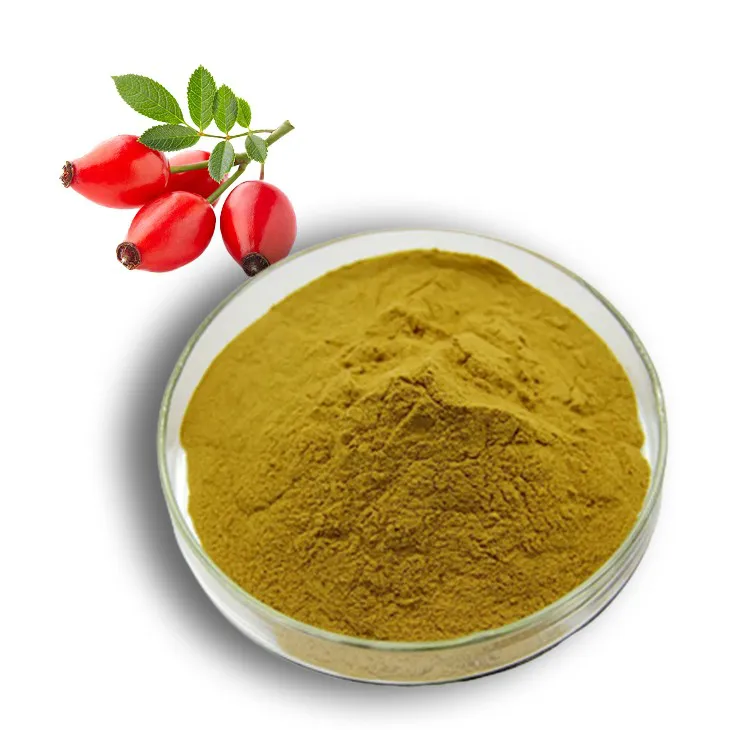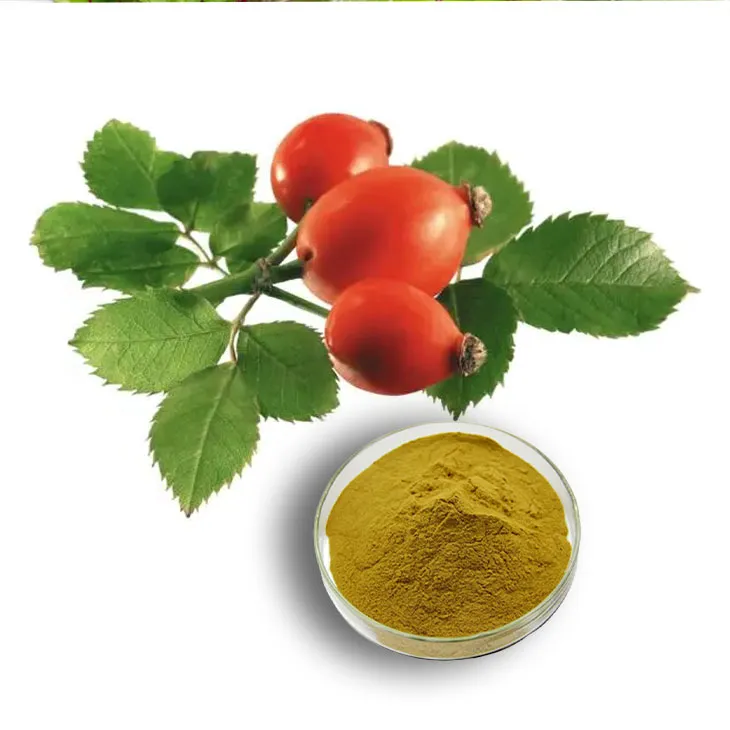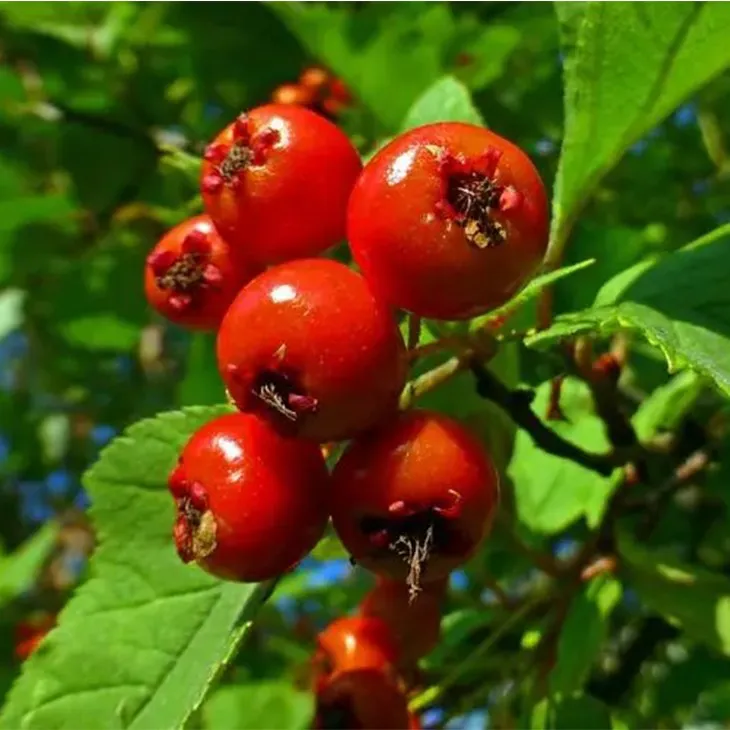- 0086-571-85302990
- sales@greenskybio.com
The process of extracting active ingredients from rose hips in rose hip extract.
2024-11-27

1. Introduction
Rosehip has been increasingly recognized for its numerous potential health - promoting and functional properties, which are mainly attributed to its active ingredients. These active ingredients can be utilized in various fields such as the pharmaceutical industry, cosmetics, and food supplements. Therefore, understanding the extraction process of these active ingredients from rosehip extract is crucial for their effective utilization and further development of related products.

2. Preparation of Rosehip Raw Material
2.1 Cleaning
The first step in handling the rosehip raw material is cleaning. Rosehips are often exposed to various environmental factors during growth and harvesting, which may lead to contamination with dirt, debris, and microorganisms. Thorough cleaning is necessary to remove these impurities. This can be achieved by washing the rosehips with clean water. In some cases, mild detergents or sanitizers may be used, but it is crucial to ensure that no residues are left, as they may interfere with the subsequent extraction process or affect the quality of the final extract.
2.2 Drying
After cleaning, drying is an important step. Drying helps to reduce the moisture content of the rosehips, which is essential for their long - term storage and also for the extraction process. There are different drying methods available, such as air drying, oven drying, and freeze - drying. Air drying is a natural and cost - effective method, but it may take a longer time and is more dependent on environmental conditions. Oven drying can be carried out at controlled temperatures and humidity levels, which can accelerate the drying process. However, it requires careful control of the drying parameters to avoid over - drying or heat - induced degradation of the active ingredients. Freeze - drying is a more advanced method that can better preserve the structure and activity of the active ingredients, but it is also more expensive and requires specialized equipment.
2.3 Grinding
Once the rosehips are dried, they need to be ground into a powder form. Grinding increases the surface area of the rosehip material, which facilitates the extraction of active ingredients. The grinding process should be carried out carefully to ensure that the particles are of an appropriate size. If the particles are too large, the extraction efficiency may be low, as the solvent may not be able to fully penetrate the material. On the other hand, if the particles are too fine, it may cause problems such as clogging during the extraction process. Different types of grinding equipment can be used, such as a mortar and pestle for small - scale operations or a mechanical grinder for larger - scale production.
3. Extraction Methods
3.1 Maceration
Maceration is a traditional and still widely - used method for extracting active ingredients from rosehip powder. In this method, the ground rosehip powder is soaked in a solvent for a certain period. The choice of solvent is crucial, as it determines the solubility of the active ingredients. Common solvents used in rosehip extraction include ethanol, water, and mixtures of both. Ethanol is often preferred because it can dissolve a wide range of active ingredients, including phenolic compounds, flavonoids, and carotenoids. During maceration, the rosehip powder and the solvent are placed in a closed container and allowed to stand at a specific temperature for a period ranging from several hours to several days. This allows the active ingredients to be gradually dissolved in the solvent. Stirring may be carried out occasionally to enhance the mass transfer between the solid and liquid phases.
3.2 Soxhlet Extraction
Soxhlet extraction is another extraction method that can be used for rosehip. In this method, the rosehip powder is placed in a Soxhlet extractor, and the solvent is continuously recycled through the sample. The solvent is heated to its boiling point in a distillation flask, vaporizes, rises through a condenser, and then drips back onto the rosehip powder in the extraction chamber. This continuous reflux process ensures that the active ingredients are continuously extracted until a relatively high extraction efficiency is achieved. Soxhlet extraction is often considered more efficient than maceration, especially for the extraction of less - soluble active ingredients. However, it also requires more complex equipment and a longer extraction time, and there is a risk of thermal degradation of some heat - sensitive active ingredients if the extraction temperature is not properly controlled.
3.3 Supercritical Fluid Extraction
Supercritical fluid extraction (SFE) is a more advanced extraction technique. In this method, a supercritical fluid, usually carbon dioxide (CO₂), is used as the solvent. A supercritical fluid has properties between those of a gas and a liquid, such as high diffusivity and low viscosity, which make it an excellent solvent for extracting active ingredients. The pressure and temperature of the CO₂ are adjusted to its supercritical state. The rosehip powder is placed in an extraction vessel, and the supercritical CO₂ is passed through it. The active ingredients are dissolved in the supercritical CO₂, and then the extract can be obtained by reducing the pressure, which causes the CO₂ to return to its gaseous state, leaving the active ingredients behind. SFE has several advantages, such as being a clean and environmentally friendly process, having high selectivity for specific active ingredients, and being able to operate at relatively low temperatures, which helps to preserve the activity of the heat - sensitive components. However, it requires specialized and expensive equipment.
4. Post - extraction Treatment
4.1 Membrane Separation Technology
After the extraction process, the obtained extract usually contains a complex mixture of various substances. Membrane separation technology can be used to further treat the extract. Membranes with different pore sizes can be selected to separate different - sized molecules. For example, ultrafiltration membranes can be used to retain large - molecular - weight impurities while allowing the active ingredients with smaller molecular weights to pass through. This helps to enrich the active ingredients in the extract. Microfiltration membranes can also be used for the removal of particulate matter or larger - sized contaminants. Membrane separation is a gentle and efficient method that can maintain the integrity of the active ingredients without the need for harsh chemical treatments.
4.2 Concentration and Drying
In order to obtain a more concentrated form of the rosehip extract, concentration and drying processes may be carried out. Concentration can be achieved by methods such as evaporation under reduced pressure or by using a rotary evaporator. This reduces the volume of the extract while increasing the concentration of the active ingredients. After concentration, drying can be carried out to obtain a dry powder form of the extract. Similar to the drying of the raw rosehip material, different drying methods can be used, and the choice depends on factors such as the nature of the active ingredients, cost, and production scale.5. Identification and Quantification of Active Ingredients
5.1 High - Performance Liquid Chromatography (HPLC)
HPLC is one of the most important and widely - used analytical tools for the identification and quantification of rosehip active ingredients. HPLC works on the principle of separating different components in a mixture based on their differential interaction with a stationary phase and a mobile phase. The extract is injected into an HPLC system, and the components are separated as they pass through a column filled with a stationary phase. Different detectors can be used to detect the separated components, such as UV - Vis detectors for detecting compounds with chromophores. By comparing the retention times and peak areas of the detected components with those of known standards, the types and amounts of the active ingredients in the rosehip extract can be accurately determined. HPLC can analyze a wide range of active ingredients in rosehip, including phenolic acids, flavonoids, and vitamins.
5.2 Other Analytical Methods
In addition to HPLC, there are other analytical methods that can be used for the identification and quantification of rosehip active ingredients. For example, gas chromatography - mass spectrometry (GC - MS) can be used for the analysis of volatile components in rosehip. Fourier - transform infrared spectroscopy (FT - IR) can provide information about the functional groups present in the active ingredients. Nuclear magnetic resonance (NMR) spectroscopy can be used to determine the chemical structure of the active ingredients at the molecular level. These methods can be used in combination with HPLC to provide a more comprehensive understanding of the rosehip active ingredients.6. Conclusion
The extraction of active ingredients from rosehips in rosehip extract is a complex process that involves multiple steps from the preparation of raw materials to the identification and quantification of the final products. Each step plays an important role in ensuring the quality and effectiveness of the extract. With the continuous development of extraction and analytical technologies, more efficient and accurate methods are expected to be developed, which will further promote the utilization of rosehip active ingredients in various fields such as health - care products, cosmetics, and pharmaceuticals.
FAQ:
What are the initial steps for preparing rosehip raw material for extraction?
The initial steps for preparing rosehip raw material for extraction include cleaning, drying, and grinding. These steps make the rosehip suitable for the extraction process.
What is the principle of maceration in the extraction of active ingredients from rosehip?
In the maceration method for extracting active ingredients from rosehip, the rosehip powder is soaked in a solvent for a certain period. This allows the active ingredients to dissolve in the solvent, which is based on the solubility of the active ingredients in the chosen solvent.
Why is membrane separation technology important in the process of obtaining rosehip extract?
Membrane separation technology is important in the process of obtaining rosehip extract because it can effectively separate different - sized molecules. This helps in enriching the active ingredients, thus improving the quality and effectiveness of the final rosehip extract.
How does HPLC help in the extraction process of rosehip active ingredients?
HPLC (High - Performance Liquid Chromatography) helps in the extraction process of rosehip active ingredients by accurately determining the types and amounts of these active ingredients. This enables better understanding and utilization of the precious components in various fields.
What are the potential health - promoting properties of rosehip active ingredients?
The rosehip active ingredients have potential health - promoting properties. However, specific properties can vary. Generally, they may have antioxidant, anti - inflammatory, and immune - enhancing properties among others, which make them valuable in the field of functional foods and nutraceuticals.
Related literature
- “Extraction and Characterization of Bioactive Compounds from Rosehip: A Review”
- “Optimization of the Extraction Process of Active Ingredients from Rosehip for Pharmaceutical Applications”
- ▶ Hesperidin
- ▶ Citrus Bioflavonoids
- ▶ Plant Extract
- ▶ lycopene
- ▶ Diosmin
- ▶ Grape seed extract
- ▶ Sea buckthorn Juice Powder
- ▶ Fruit Juice Powder
- ▶ Hops Extract
- ▶ Artichoke Extract
- ▶ Mushroom extract
- ▶ Astaxanthin
- ▶ Green Tea Extract
- ▶ Curcumin
- ▶ Horse Chestnut Extract
- ▶ Other Product
- ▶ Boswellia Serrata Extract
- ▶ Resveratrol
- ▶ Marigold Extract
- ▶ Grape Leaf Extract
- ▶ New Product
- ▶ Aminolevulinic acid
- ▶ Cranberry Extract
- ▶ Red Yeast Rice
- ▶ Red Wine Extract
-
Lemon Extract
2024-11-27
-
Propolis Extract Powder
2024-11-27
-
Marigold Extract
2024-11-27
-
Yam Extract
2024-11-27
-
Lavender Extract
2024-11-27
-
Acerola Juice Powder
2024-11-27
-
Red Date Extract
2024-11-27
-
Lotus leaf extract
2024-11-27
-
Horse Chestnut Extract
2024-11-27
-
Green Tea Extract
2024-11-27





















